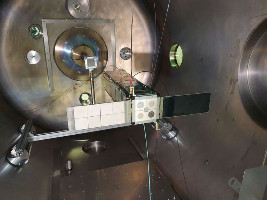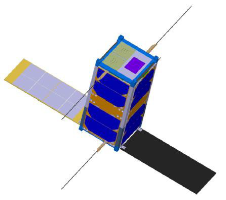| Satellite name | CROCUS (ChaRging On CUbeSat) |
|---|---|
| Form factor | CubeSat |
| Units or mass | 2U |
| Status | not launched, expected in 2025 |
| Launcher | not launched |
| Organisation | ONERA |
| Institution | Institute |
| Entity | Academic / Education |
| Nation | France |
| Partners | Ecole polytechnique, LATMOS (Laboratoire Atmosphères, Milieux, Observations Spatiales) |
| Oneliner |
Relate charging and discharging events to auroral arcs induced by GEO substorms by comparing to other spacecraft data such as DMSP, FREIJA, Jason-3 at LEO. |
| Description |
The design of the platform has been initiated with the CSEP and is an ongoing development with scientific and industrial partners. |
| Sources | [1] [2] [3] |
| Photo sources | [1] |
Last modified: 2023-12-09


